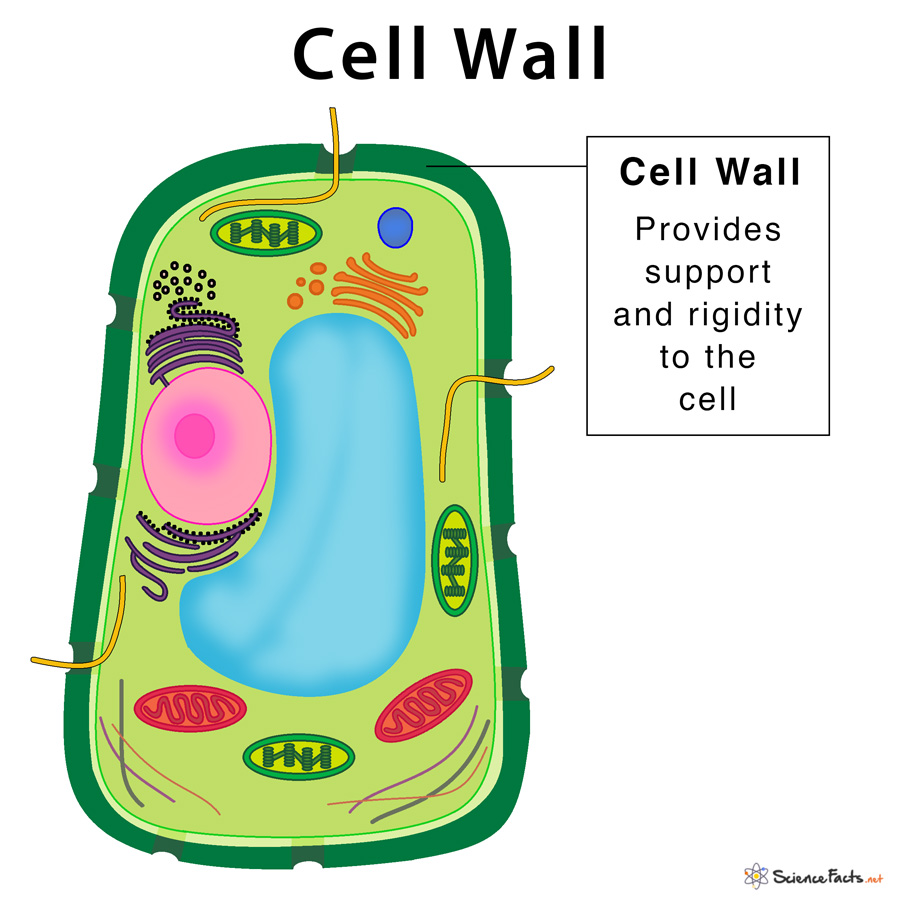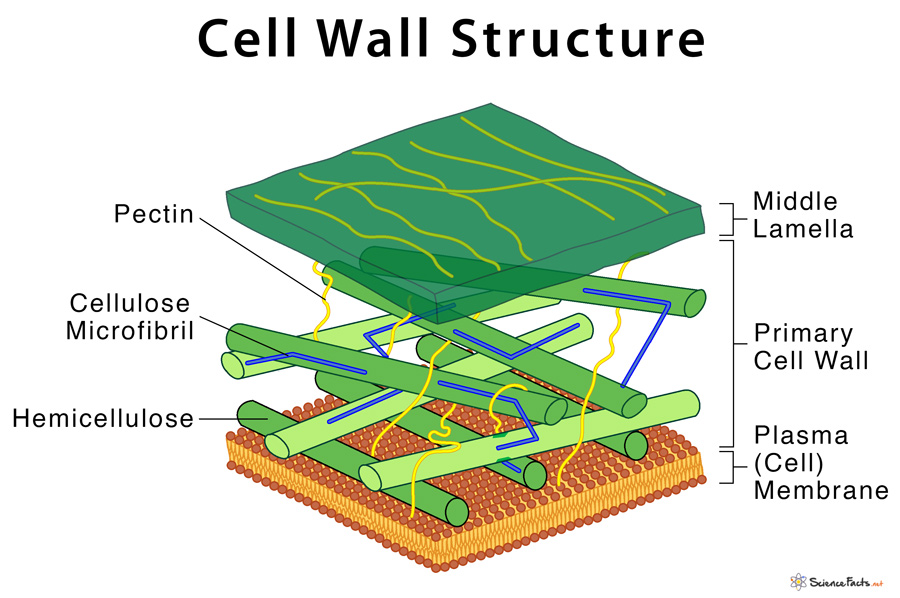The cell wall was discovered by Robert Hooke in 1665, while its name came from the Latin word ‘cella’, meaning a ‘small room’.
Fungal Cell Walls
In general, fungi with cell wall have three layers that together increase the rigidity and strength of the cell wall:
Cell Walls in Algae
Algae being a widely diverse group, their cell walls also vary in their composition. In algae it consists of polysaccharides, like cellulose or glycoproteins, while others contain both of them. In addition, algal cell walls may have mannans, xylans, alginic acid, and sulfonated polysaccharides. While mannans are proteins that make microfibrils in some green and red algae, xylans are complex polysaccharides that are sometimes found to replace cellulose in algae. Another type of polysaccharide, the alginic acid is often found in brown algae.
Cell Walls in Bacteria
The most commonly studied prokaryotic cell wall found outside the cell membrane; it is primarily made of a unique molecule called peptidoglycan or murein. Peptidoglycan consists of alternating sugars and amino acids arranged in a mesh-like layer that helps to provide shape and protection to the cell. Based on its composition and the ability to retain dyes, the bacterial cell wall is classified into two distinct groups. Gram-positive bacterial cell wall: Contains thick, multiple layers of peptidoglycan that are arranged stack by stack Gram-negative bacterial cell wall: Contains a thin layer of peptidoglycan, that is surrounded by an outer layer of lipopolysaccharides (LPS). The LPS protects gram-negative bacteria against certain antibiotics, such as penicillins.
Cell Walls in Archaea
Semi-rigid in nature, it is mostly composed of surface-layer proteins called S-layers, and lack peptidoglycan molecules, with the exception of methanobacteria that have pseudopeptidoglycan in their cell wall. The pseudopeptidoglycan is distinctly different in composition from the peptidoglycan layer found in the prokaryotic bacterial cell wall.

